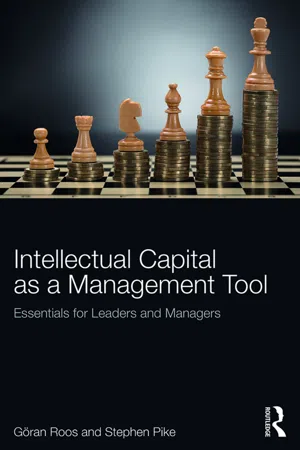![]()
The term “intellectual capital” has existed for a long time, as can be seen from the literature review below. Intellectual capital (IC) can be defined as all non-monetary and non-physical resources that contribute to an organisation’s value creation and that are to some extent influenceable by the organisation.
Although there are many different ways (see below) of subdividing IC, the one favoured by the authors is to divide IC into three categories based on their economic behaviour. These are:
1.Relational: These include all relationships that members of the organisation have on behalf of the organisation or that the organisation has directly, such as with customers, consumers, intermediaries, representatives, suppliers, partners, owners, lenders and the like.
2.Organisational: The intuitive definition was best articulated by Leif Edvinsson as “all those things that remain in the organisation when the employees have left the building but that you cannot find in the balance sheet”. The more formal definition would be all non-physical results of human endeavours that are owned by the organisation. This includes resources such as brands, intellectual property, processes, systems, organisational structures, information (on paper or in digital form), software, service concepts, etc.
3.Human: All the attributes that relate to individuals as resources for the company and under the requirement that these attributes cannot be replaced by any combination of physical equipment, software and information. It is clear that in today’s digital value-creation paradigm this category is being eroded by access to digital information, the use of machine learning and deployment of robots and other autonomous equipment. This category includes resources such as competence, attitude, skill, tacit knowledge, interpersonal skills, personal networks and the like.
These IC resources all form the potential basis for competitive advantage but few of them make it into any disclosure document in a verifiable form. Brand is sometimes found in the balance sheet but the value assigned to it is in no way correlated to its realisable market value at any given time.
IC resources behave differently from monetary and physical resources and therefore must be managed in a different way. Monetary and physical resources, for example, are both additive in nature, i.e. if one uses them, one has less left to use and if one invests in them, one has more left to use. Both follow the law of diminishing marginal returns and both are owned and controlled by the organisation in whose balance sheet they appear.
IC resources (i.e. relational, organisational and human resources), on the other hand, have different characteristics. They are non-additive in nature – just because one uses them, one does not necessarily have less left to use and just because one invests in them, one does not necessarily have more to use.
Relational and organisational resources follow the law of network economics. This means that initial investments tend to exhibit very little return and substantial cumulative investments are needed before returns reach reasonable levels. After this, the marginal return of further investment in these resources will increase until an inflexion point2 is reached, after which, further marginal investments generate diminishing marginal returns. Here, we can use the example of a social media app. The first user of the social media app had no use whatsoever out of the investment in the app since there was nobody else using it. Subsequently, each new app user generated value for all existing users of the app since the user base increased. Each subsequent user of the app is here generating more marginal value to the existing users of the app than any previously added user of the app. This continues until there are so many app users that it starts to get difficult to get value out of the app due to capacity issue (either human capacity, i.e. too much incoming information, or machine capacity, i.e. insufficient memory or processing power). After a given point, each subsequent new user reduces the increase in value more than the preceding new user, and at the end of the day the final new user adds zero value to existing users of the app. This is an example of network economics, an effect that can be seen in all relational resources such as customer relationships and all organisational relationships such as brands. A highly relevant discussion around this effect and the value of bitcoins (an organisational resource) can be found in Wheatley, Sornette, Huber, Reppen & Gantner, 2018.
Human resources are not owned by anyone but are controlled by the individual. Just because the individual comes to work does not mean that one has access to his/her competence. The gatekeeper between the individual’s competence and the organisation that wants to make use of that resource is the individual himself or herself.
Human resources tend to follow the law of increasing marginal returns. This can best be illustrated by the statement: “The more you know about something the more you understand how little you know as compared to what could be known.” This also means that in a discourse between two individuals of high but differing levels of knowledge, both will learn, but the knowledge distance between them will have increased.
Relational resources are not owned and controlled by the organisation. At best, it can influence relationships. The organisation does not own its customer relationships, but it can try to influence them (here, the customer franchise view can be helpful; see e.g. Macdermott, 2000; Venkatesan & Kumar, 2004; Chang & Tseng, 2005; Perna & Baraldi, 2014). A relationship is, from each party’s point of view, controlled by the other party. No contract in the world can prevent a party from walking away from a deal mentally and thereby preventing the success of its intent, while still abiding by the letter of the agreement.
Organisational resources are owned and controlled by the organisation. In effect, they are the only IC resources owned and controlled by the organisation. These resources can be traded, albeit of...
